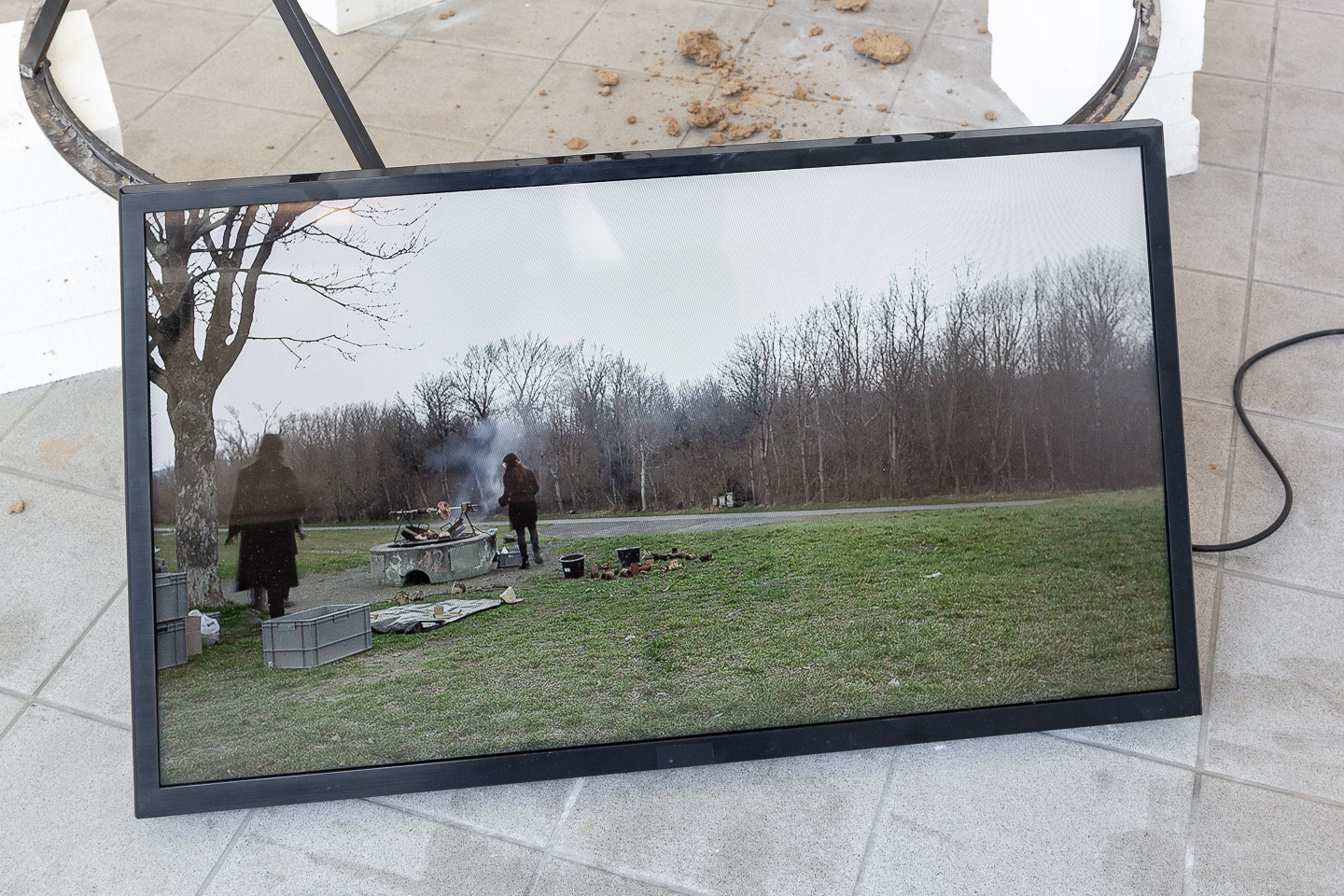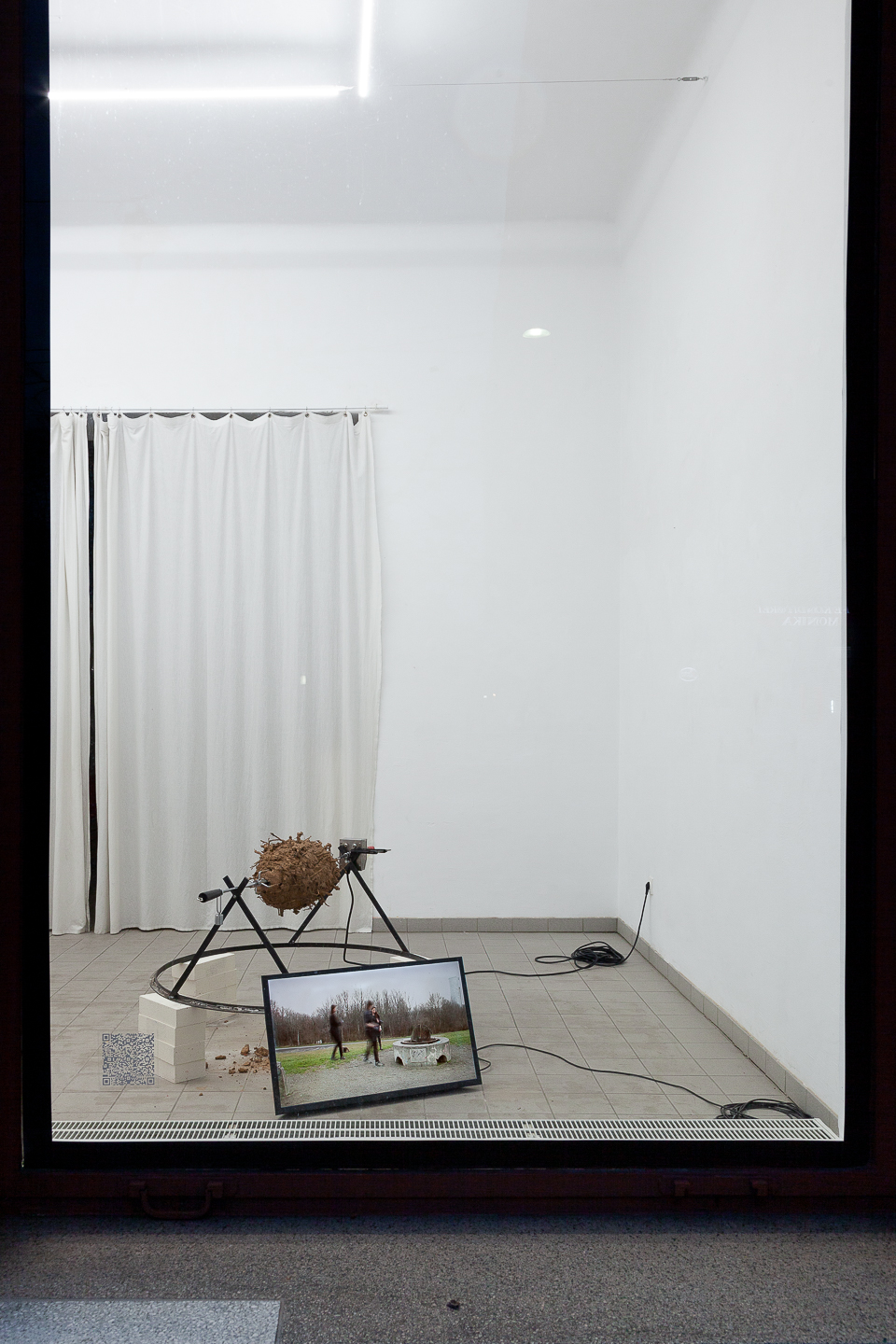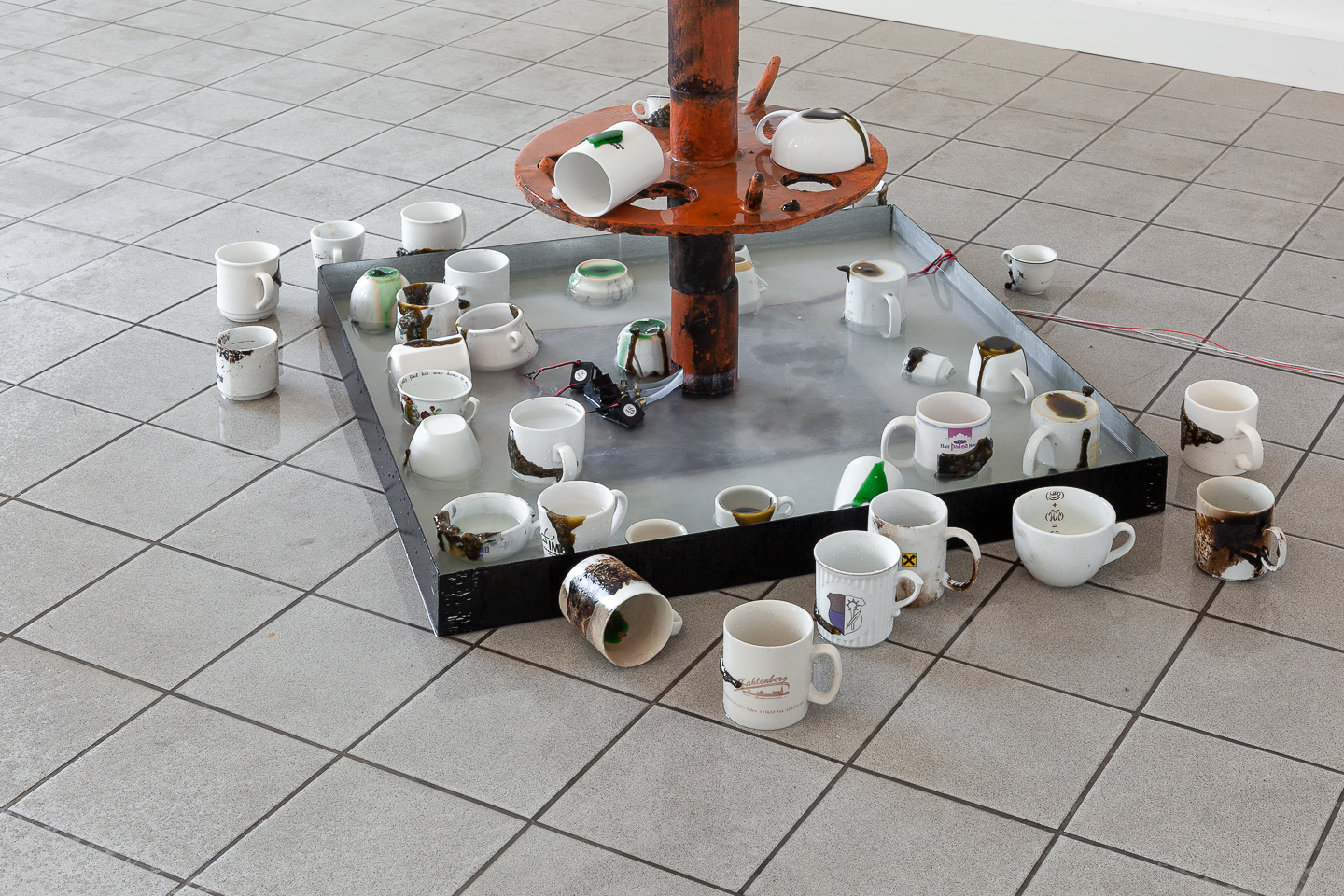Mud-Group#3:
Who has Land to make a Fire?
March 2023 - April 2023
Vienna, Austria
Video@
Verena Tscherner
Photos@ Flavio Palasciano
Who has Land to make a Fire is an installation and media artwork using sustainable ceramics made from forest clay, wood fired on a barbecue spot in Vienna, advertisement-cups re-glaced with garbage-glass, water, motors, hoses and pumps.
The exhibition Mud-Group
#3: Who has land to make a fire? by Patrícia J. Reis, Céline Struger and
Kristin Weissenberger revolves
around the group's collaborative and artistic process, using ceramics as their
primary medium for exploration. The group’s goal is to create a shared artistic
process that encourages reflection and discussion among the artists involved.
Through this project, the artists aim to shed light on the emancipation history
of female* artists and explore the relationship between ceramics, hacking and
other fields of art.
Feminism and ceramics have a long and intertwined history, with many artists
using ceramics as a means to explore feminist themes and ideas. Feminist
ceramic art is a genre of artwork that arose in the 1970s as part of the larger
feminist movement, which sought to expose the oppressive patriarchal structures
that had dominated society for centuries. Feminist ceramic artists like Betty
Woodman and Judy Chicago used their art as a tool for political and social
critique, often exploring themes related to gender, power, and identity.
Ceramics have also been increasingly discussed as
materials with agency within the discourse of new materialism. New materialism
emphasizes the active role of materials in shaping and being shaped by social,
cultural, and historical contexts. Ceramicists have long been aware of the
agency of their materials, as the process of creating ceramics involves a
dialogue between the artist and the material itself.
According
to Jane Bennett, "vibrant matter" has its own agency and vitality,
and is not merely a passive object to be acted upon by human agents. Ceramic
materials, like other materials, have their own properties and capacities, and
can exert influence on the artist's process and the final outcome of the
artwork. For instance, the way that clay responds to touch, the effects of heat
on glazes, and the colors and textures of various clay bodies all contribute to
the creative process and the final product.
The
artists' question "who has a land to make a fire?" suggests a
positive desire to embrace traditional, low-tech methods of generating warmth,
light, and fostering community through the use of fire. This inquiry also
indicates a longing to break away from the often-detached and impersonal
experience of contemporary, urban lifestyles, and to establish more direct,
embodied connections with nature and others. By raising this question, the
artists are demonstrating their radical intent to challenge conventional
understandings of ownership, property, and resource access, while also
exploring sustainable communal living and alternative models of resource use.
The Mud-Group's artistic journey began with a series of initial meetings
where the members explored their shared interests in ceramics, particularly its
cultural and feminist background. The group recognized the importance of using
traditional techniques and materials as a way to resist capitalist production
methods and to highlight the importance of sustainable and ethical hardware.
As the group developed their artistic practice, they began to experiment
with ancient ceramic production techniques in a workshop located in the forest.
The artists were able to learn more about and incorporate sustainable methods
for producing ceramics, which furthered their commitment to anti-capitalist
practices.
However,
the Mud-Group's radical attitude did not stop there. They continued their
exploration of autonomy by hacking the city infrastructure and reclaiming a
public space on the Donau Island in Vienna. Donau Island's public barbecue
spots in Vienna, established in the 1970s due to social-democratic reforms, are
still in use today and attract visitors from all walks of life, including
immigrants. While some upper middle class and privileged citizens view the
spots as unsanitary and a nuisance, they serve as a vital social and cultural
space for many immigrants, allowing them to maintain their cultural traditions
and foster community building. These negative attitudes towards the
public barbecue spots are indicative of a larger issue of class and cultural
divisions in Austrian society. The upper middle class and privileged citizens
may not understand the importance of the barbecue spots to immigrants, as they
may not have experienced the same struggles and challenges as immigrant
communities.
During this
exercise, the group members questioned the idea of public space and ownership, and
used their art to push boundaries and reclaim space for public use.
Hacking of urban infrastructure for autonomous living
refers to the practice of using and repurposing existing urban infrastructure
for self-sufficient and sustainable living. This practice has gained popularity
in recent years as people seek alternative solutions to live off the grid and
reduce their reliance on traditional forms of infrastructure, such as power
grids and water supply systems. Ethical hardware and DIY approaches play a
crucial role in this process, as they enable individuals to build and maintain
their own sustainable systems. By hacking and repurposing existing
infrastructure, individuals can create their own networks of sustainable
resources, allowing for greater autonomy and resilience. This practice not only
promotes self-sufficiency but also contributes to a more sustainable and
ethical use of urban resources.
Artistic
hacking is also becoming increasingly popular as a means of creating
sustainable living solutions. By incorporating creative and artistic elements
into the design and implementation of autonomous living systems, individuals
and communities can create more engaging and aesthetically pleasing solutions
that are also functional.
Through the
exhibition, visitors will be able to witness the Mud-Group's artistic journey
and their commitment to sustainable and ethical hardware, autonomy, and a DIY
approach to ceramic production. The exhibition will showcase the group's
artwork, including their ceramics produced using traditional techniques, as
well as documentation of their public space reclamation project on the Donau
Island.
This
installation showcases two unique pieces. Firstly, a water fountain made
entirely out of ceramic pieces that were fired at Donau Island, with ceramic
plates holding cups collected from common spaces such as offices and artist
ateliers. The cups, which serve as carriers of advertisements, have been
intentionally covered with broken glass and melted onto the cups through the
same firing process as the ceramic pieces. The second piece features a
customized metal structure specifically built for barbecue place number 12,
along with a hacked barbecue rod typically used for cooking chicken. This piece
re-enacts the firing process and adds to the overall experience of the
installation.
Céline Struger and Kristin Weissenberger have joined forces with the PEEK Feminist Hacking:
Building Circuits as an Artistic Practice research project, which seeks to
establish feminist hacking as a strategy for emancipation in the art, science,
and technology fields (Stefanie Wuschitz, Taguhi Torosyan, and Patrícia J.
Reis). The exhibition aims to showcase how the project's approach to new
materialism promotes emancipation through the agency of materials.
Mud-Group III: Who has land to
make a fire? showcases a collaborative and
thought-provoking approach to ceramics and its relationship with other fields
of art.











